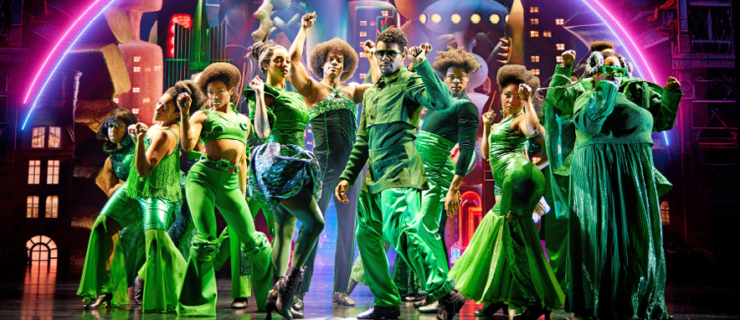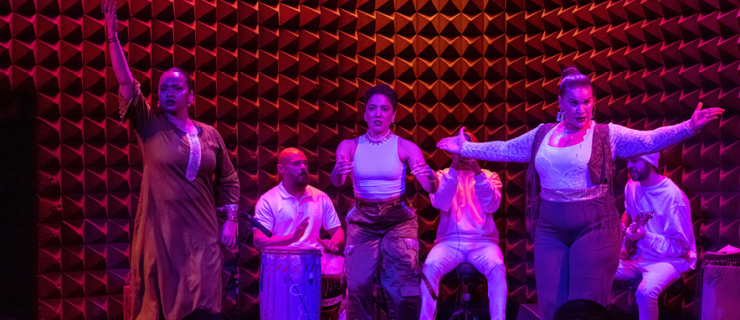Mayara Magri’s Intellect, Resolve, and Versatility Have Powered Her High-Flying Career
During the 2011 Prix de Lausanne, a 16-year-old Brazilian ballerina delighted audiences with her undeniable talent and effervescent charm. Thousands watched the competition’s vlog series on YouTube, which chronicled her experience each day. Even for those who did not speak Portuguese, the series made two things clear: 1. That she wanted to be a principal ballerina, and 2. That she could do it.
Mayara Magri has, indeed, done it—and at her dream company, no less. In 2021, during Magri’s 10th year with The Royal Ballet, director Kevin O’Hare promoted her to the company’s highest rank. But Magri’s work is far from done.
“I used to always say I wanted to be a principal with The Royal Ballet. I wouldn’t think about after that,” Magri says, smiling to herself. As she continues, her hands fill with an energy that reveals her determination and straightforward sincerity: “Now, I really want to establish myself here.”

For Magri, ballet is an all-encompassing lifestyle. “You can’t just walk into an office and ‘That’s what I am’ for six hours, and then walk away,” she says. She’s all in, with a resoluteness of character she’s had from a young age.
Now 29, Magri was born in Rio de Janeiro, Brazil, to a family with no known dance history. That changed when a school friend suggested dance classes. Magri and her two sisters soon began studying ballet on scholarship at Rio’s Escola de Dança Petite Danse. Without that scholarship, she says, ballet would not have come into her life, as the cost of putting three girls into classes would have been too much for her family.
By age 12, Magri was practicing full variations on pointe. She explains that in Brazil, it is not uncommon for teachers to challenge their students with complex choreography at an early age. It was also standard for young dancers to perform onstage frequently to nip stage fright in the bud. Magri remembers dancing outside of shopping malls on a dance floor her teacher had laid down. Evidently, it worked: “I am not scared of the stage,” she says. “I actually really love it.”
That early comfort with being onstage, combined with Magri’s inherent pluck, helped develop the attack and solidity that would come to define her dancing. Those qualities also came in handy when she began competing around age 12, eventually leading to her winning turn at the Prix de Lausanne in 2011. After the competition, her teachers encouraged her to train in the U.S., arguing that the country’s schools would be a better fit for her style and Vaganova background. But Magri had her heart set on The Royal Ballet School.
“I was just obsessed with the Royal Ballet DVDs,” she says, laughing. “Especially the one of La Bayadère with Darcey Bussell as Gamzatti. And YouTube videos—I used to watch them over and over again. I was just like: I want that.”
O’Hare, who had just begun his first year as director, remembers her arrival in London clearly. While sitting in on the school’s classes and performances, “I remember just being bowled over by her dynamics,” he says. “She really looked like somebody that had the potential to go far within the company.” After a year in the school’s uppermost level, Magri was one of the first academy dancers to receive a contract for the 2012–13 season.
But the transition to The Royal’s style was not without its challenges. For some time, she felt confused about her teachers’ emphasis on subtle details and lower, rather than up-to-the-ears, legs—a “less is more” approach that conflicted with the “always more” mentality her teachers encouraged in Brazil. Now, Magri believes that perspective shift was crucial to her success. “I carry both with me,” she says. “I can still do a massive grand jeté with split legs, but with a well-placed upper body and delicate fingers.”

For several years, Magri kept her head down and steadily worked to master The Royal’s finesse. She was promoted to first artist in 2015, soloist the following year, first soloist in 2018, then principal in 2021. While climbing the company ranks, Magri approached her career with a balance of verve and patience—much like the happy marriage of power and subtlety she continued to foster in her dancing. “She is a real company member, someone who will always be there for the company and her colleagues,” says friend and fellow principal dancer Marianela Nuñez. “She’s a generous soul…something that comes across when you see her on the stage.”

Olga Evreinoff, a coach at The Royal who has worked with Magri on major roles like Princess Aurora and Gamzatti, admires Magri’s intellect, resolve, and capacity for integrating feedback. “I think her strength is herself,” says Evreinoff. “It’s just how she is, like the airplane that goes and goes faster, and then it takes off. She’s at that point where she’s taken off.”
Recently, Magri has leaned further into her artistic development. In her downtime, she and her partner, fellow Royal principal Matthew Ball, enjoy attending operas and classical concerts to connect with the opera house’s other artists. She’s also a fan of the TV show “Friends” (“I’ve probably seen it through six times now!”), which helps her wind down from particularly taxing days.
Magri and Ball motivate each other both inside and outside the studio. “We can be really honest and help each other with our weaknesses,” she says. “For me, that’s partnering—Matthew reminds me I can’t be too much in charge.” The duo performs in galas around the world during breaks, opportunities Magri relishes for the chance to travel and to practice repertoire. One example is the role of Kitri, which she brushed up on earlier this season for the 2023 Prix de Lausanne gala, then danced in The Royal Ballet’s fall production of Don Quixote.
Going forward, Magri hopes to expand her reach in the company’s repertoire, with Manon being a dream role. “I think one of the challenges for Mayara is that she loves being onstage,” says O’Hare. “And as a principal, you perform less than you do as a soloist.” But when she is onstage, “She hits you between the eyes,” he says. O’Hare also hopes Mayara will be able to create more original roles that showcase her versatility, as she did with Rosaura in Christopher Wheeldon’s Like Water for Chocolate and several solo roles in the company’s contemporary repertoire.
Eventually, Magri plans to transition into full-time coaching and education, citing a great desire to give back. She points especially to the people in Brazil who have shared their pride and supported her throughout her career.
“I just need to keep going forward, inspiring people to keep on doing what I love to do, and to help them find the joy that I found,” she says. “The career I’ve had is giving me so much that can help future generations.”




